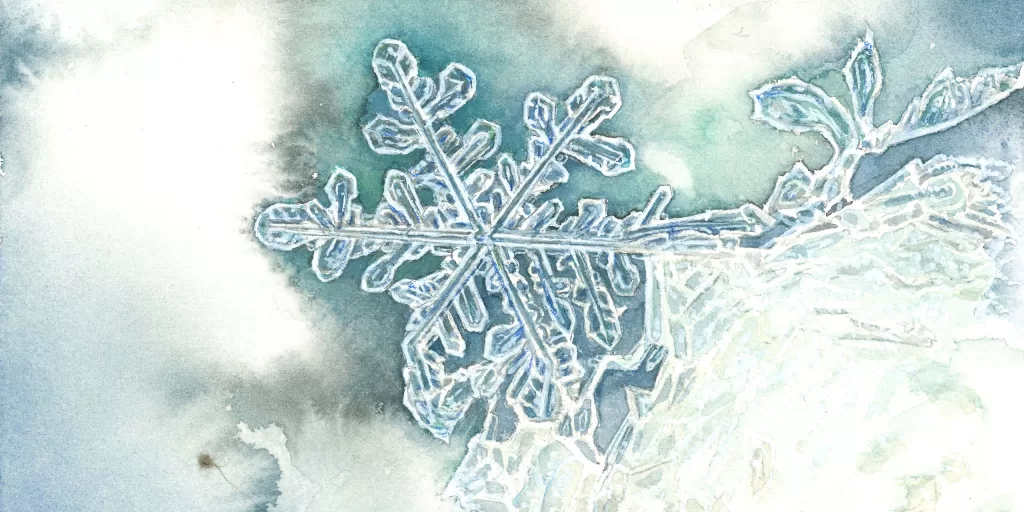We recently talked about the scarcity of precipitation in the form of snow that has characterized the last few months (but also the winter of 2021-22). However, the last week also brought with it some snow: let’s see then what is the current situation
Little snow, for the second year in a row: this we wrote a few weeks ago, explaining how these months have been characterized by a rather worrying scarcity of precipitation in the form of snow rather worrying, beyond that for winter tourism, if we consider the importance of snow as a water supply for spring and summer when, by melting, it ensures the supply of water resources in the months when it is most needed.
The last few days, however, seem to have changed the situation somewhat. It has been snowing all over Italy, from the Alps to the Apennines. Has this snow been is sufficient to restore our snow (and therefore water) supplies? Not really, although we can count on some positives. Not really, although we can count on some positive elements.
“The consideration we have to start from is that snow accumulation in winter has to be seen as a marathon, and not as a 100-meter race: in fact, snow has to have a way to accumulate over the months, and hardly a few intense and concentrated snowfalls over time can make up for the deficits that have accumulated,” explains Francesco Avanzi, researcher in our Hydrology and Hydraulics Department. “In fact, our data still show a deficit of 35 percent compared to the last ten years on a national scale-with a difference of only +12 percent compared to last year, which was characterized by a very dry situation and of which the effects were also seen in the summer.”
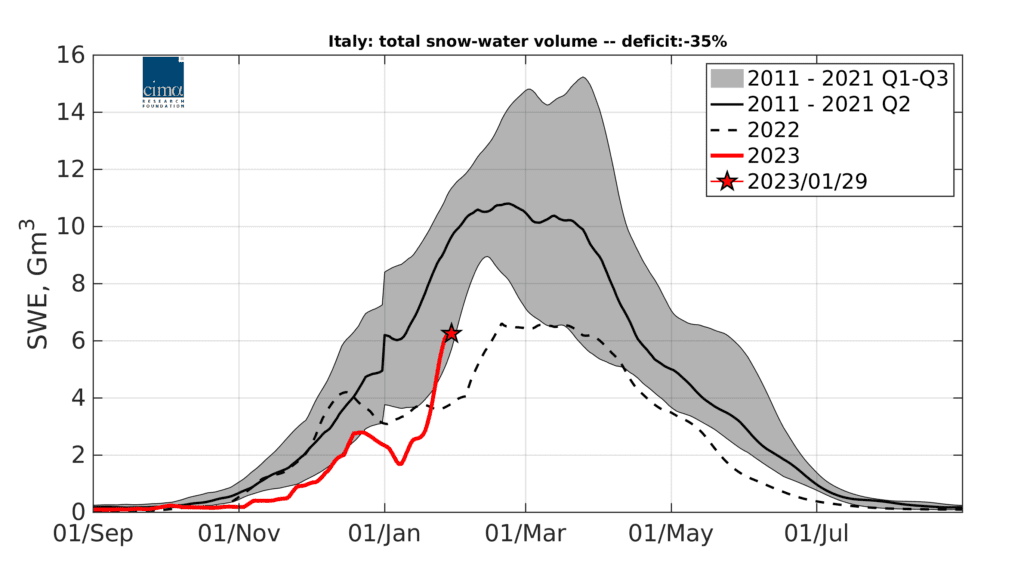
Part of the explanation is to be found in the fact that snowfall started later than average, also aided by a particularly mild autumn. Moreover, the abnormally high temperatures in December and January caused snow to start melting earlier.
“Some positive data, however, we can report. First, after the last snowfall, the snow stopped melting and started to accumulate,” Dr Avanzi explains. “Added to this, at least for some regions, there is finally a significant increase in snowfall for this period compared to the last decade: this is the case in Abruzzo (+48 percent) and Tuscany (+69 percent). Even better seems to be the situation in Emilia-Romagna.”
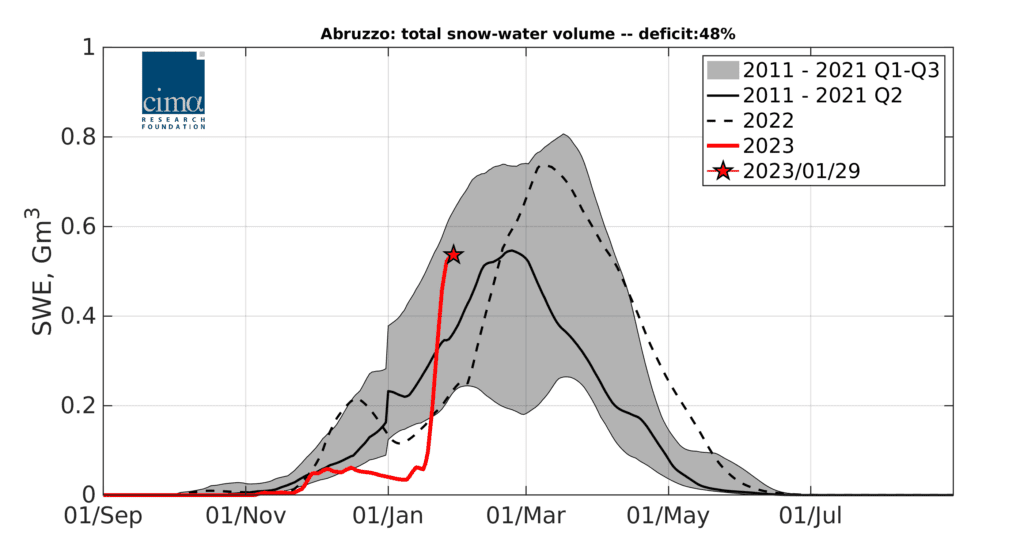
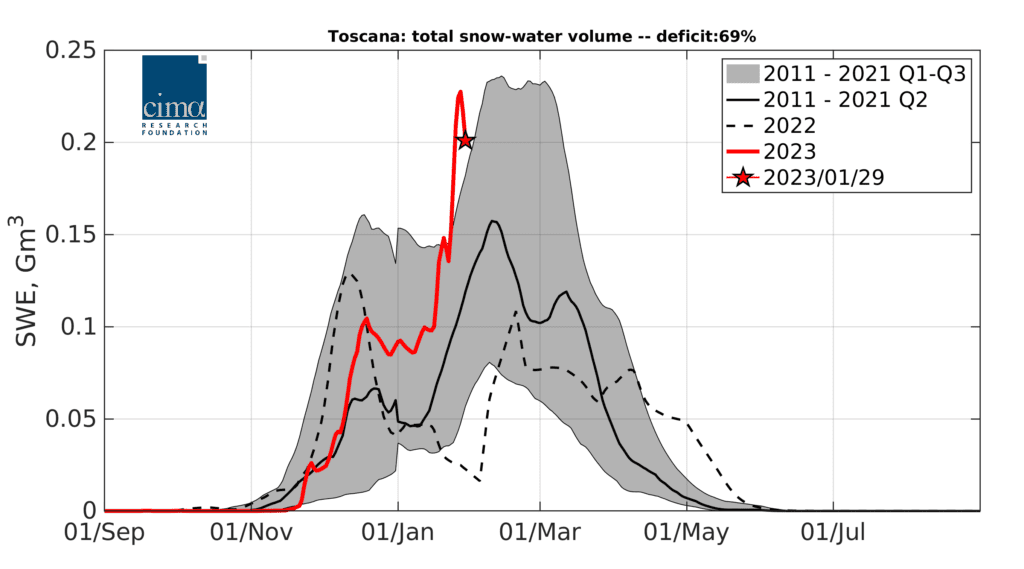
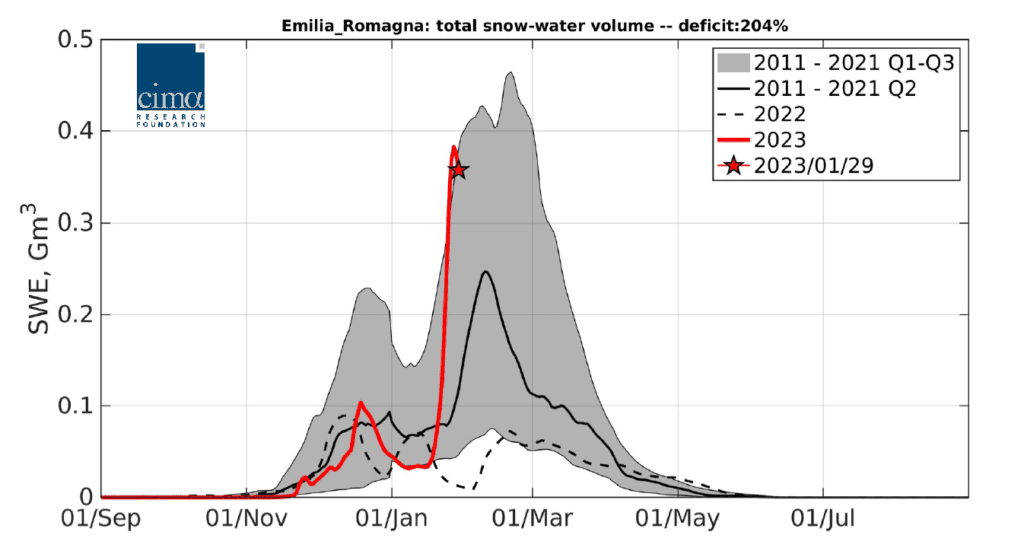
Unfortunately, this is not enough to make up the national deficit, and, more importantly, there is still only about half as much snow left in the Alps as in the past decade. This is a significant problem, because it is the Alpine snow that accounts for 90 percent of Italy’s water resource – that is, the Alps contribute far more water than the Apennines. In other words, the national deficit is determined by snow conditions in northern rather than central and southern Italy. Moreover, as we had mentioned earlier, it is from the Alps that the water that feeds the Po River basin, the most important in our peninsula, comes from. “In a recent paper, we estimated that snow can account for up to 60 percent or more of the water flowing annually in Italian rivers (e.g., the Po),” Dr Avanzi says.
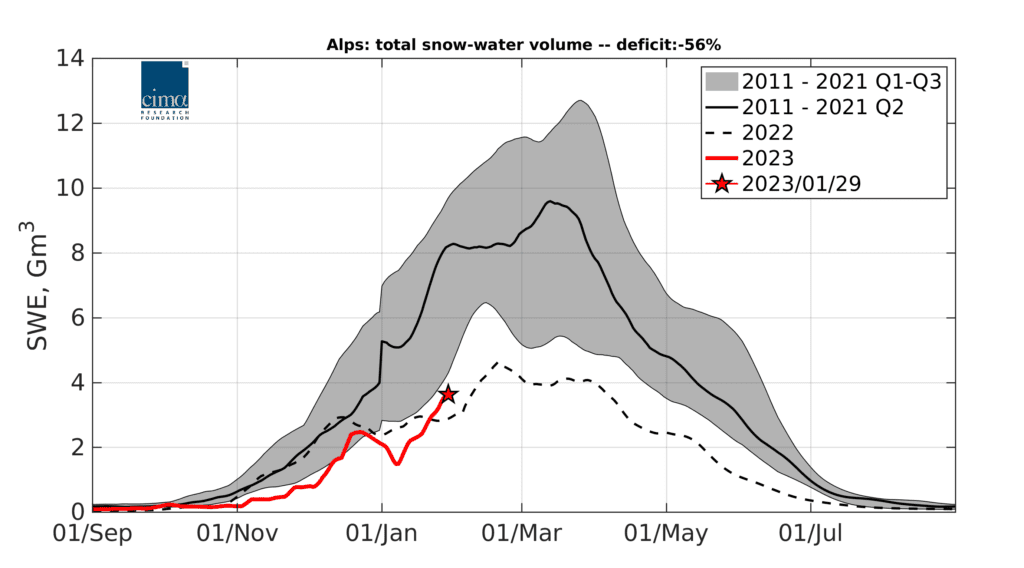
“In conclusion, then, the presence of a snow deficit in Italy is confirmed. Certainly, the cold conditions and precipitation of the last few days have helped to fill it, but only to a small extent: it is necessary that they persist over time to zero it, bringing snowfall back to the levels of the last decade,” Dr Avanzi concludes.
